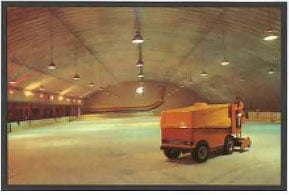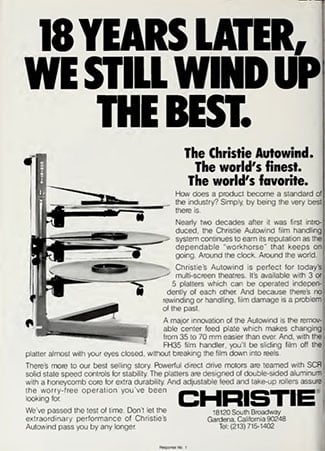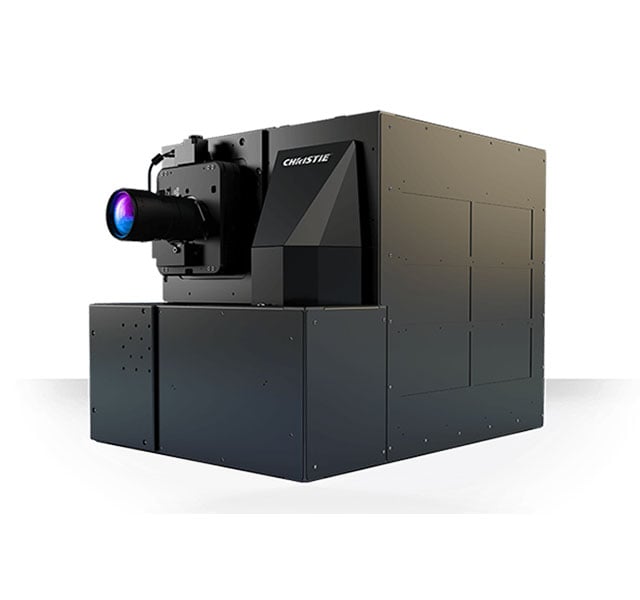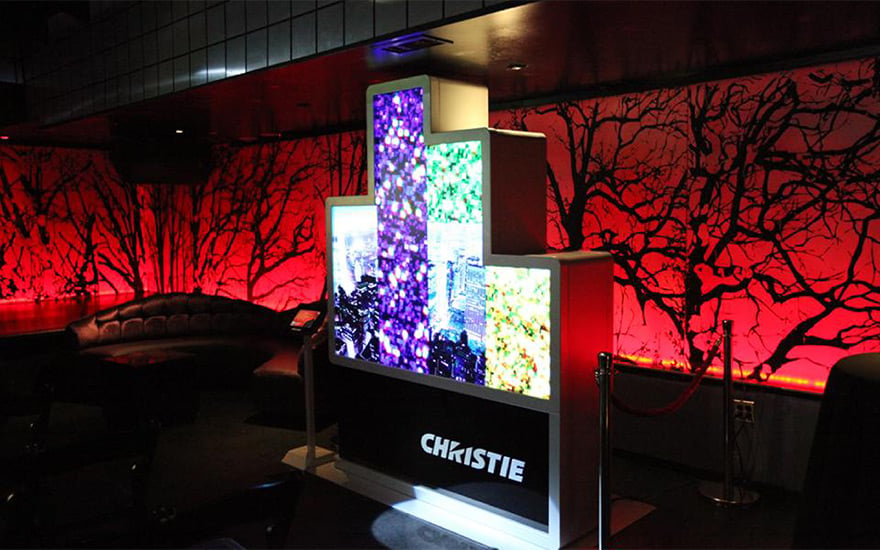Let’s look at some of the milestones from along the way
95 years in business is no small feat.
According to the U.S. Bureau of Labor Statistics, only 25% of new businesses survive 15 years or more, and 65% fail in the first 10 years. While we don’t claim to have the secret to business longevity, we do know ours has something to do with our adaptability, innovative solutions, and the people who bring their passion for AV to work every day.
Our journey to 95 years
When you make it to 95 years, the past is filled with milestones. You might be familiar with some of them (did you hear we won our third Academy Award® this year?), but others might not be as familiar. We dug deep into our history to find some of the more interesting milestones along the way.
The early days
1929: It likely wasn’t the easiest year to start a business, but S.L. Christie contributed USD$27,500 in today's dollars and partnered with J.S. McColpin to sell battery chargers and power supplies under the name "McColpin-Christie Ltd."
1930s: The 1930s are marked by the beginning and end of the Great Depression, and also by one of the top-grossing films of all time: “Gone with the Wind”. Times are starting to change, and after a buy-out by S.L., the business was renamed Christie Electric Corporation.
1940s: The Second World War. The first Captain America comic book. The computer. By the end of the decade, the economy was in full swing, and our sales were on the rise, too. Revenue reached $42,000 a year, and by 1951, sales reached USD$1,000,000 (about $12,000,000 in today’s dollars).
1946: This year marks the first Festival de Cannes, the international film festival, after initially planning to host the event in 1939. The inaugural festival featured 19 countries, and every nation left with a Grand Prix! We would become the festival's projection technology partner in 2006.
1950s: Tom Christie, S.L.’s son, takes over the business and expands into multiple divisions, which will eventually include electro-optical, industrial and government, automotive, and a motive power division. With a focus on batteries and chargers, Christie is well-positioned to support the booming car culture of the 1950s.
Did you know that Christie Electric Corporation had multiple divisions, including a Motive Power Division? It specialized in battery chargers for vehicles including boats, golf carts, and Zambonis.

A new and innovative era begins
1972: Christie introduces the “Autowind”, a film handling system that’s available in three or five platters, and with no rewinding or handling, it helps to prevent film damage.

1987: Dr. Larry Hornbeck at Texas Instruments invents DLP® technology. It’s used in the Christie DigiPro, the world’s first DLP cinema projector, and the Roadie, the world’s first purpose-built rental staging projector. DLP technology is still used in many of our projectors to this day.

1999: Disney/Pixar premieres Toy Story 2, using the Christie DCP-H projector. It’s the first time a DLP cinema projector is used to premiere a fully digital feature. 1999 also marks the beginning of our sponsorship of the Toronto International Film Festival, which continues to this day.
Did you know that Christie acquired Electrohome Projection Systems, a division of Electrohome, in 1999? Electrohome began in 1907 in Kitchener, Ontario, as a maker of hornless phonographs, and would later produce the first color TV sets in Canada.
2001: We introduce the world’s first line of stereoscopic 3DLP projectors. Designed for 3D and simulation environments, the single projector solutions are optimized to work with Liquid Crystal (LC) shutter glasses for active stereo or with LC modulators placed in front of the lens for passive Stereo3D with polarized eyewear.
2009: We launched MicroTiles® in November 2009. Bob Rushby (now retired) and Academy Award winner Mike Perkins hatched the idea to create a near-seamless digital canvas that can be configured in almost any shape or size on a napkin in a Tokyo hotel restaurant.
2019: We launched Christie Eclipse, the world’s first 4K RGB pure laser projector with HDR. The Hayden Planetarium at the American Museum of Natural History installed six Eclipse projectors that same year, and the projector was named for a TEA Thea Award for Innovative Technology.

2021: 252 Christie RGB pure laser projectors illuminate the Al Wasl Dome at Expo 2020 Dubai. This stunning project is the centerpiece of the Expo site and holds a Guinness World Record for the largest interactive immersive dome.

The milestones continue
2024: As our 95th-anniversary celebrations began, we also celebrated Mike Perkins receiving the Academy of Motion Picture Arts and Sciences Award in Scientific and Engineering, along with three other recipients, for his work on the design and development of the Christie E3LH projection system, developed in partnership with Dolby Laboratories.

2024: The innovation that help us get to 95 years continues at CinemaCon where we demonstrated a new technology that improves energy efficiency and increases the sequential contrast capability of our RGB pure laser cinema projectors.
Curious to know more about our history?
Check out The story of Christie!



